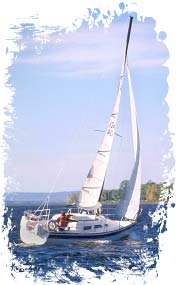Fan Micro Car DIY STEM Kit
$9.99$5.95
 Since the early days of sailing, ships have undergone a continuous improvement in design
so that today's modern sailboats, at casual glance, may give the appearance of having the
ability to travel upwind (against the wind). In actuality, a sailboat can not travel
directly into the wind but employs sailing technique known a 'tacking,' to zigzag across a
headwind.
Since the early days of sailing, ships have undergone a continuous improvement in design
so that today's modern sailboats, at casual glance, may give the appearance of having the
ability to travel upwind (against the wind). In actuality, a sailboat can not travel
directly into the wind but employs sailing technique known a 'tacking,' to zigzag across a
headwind.